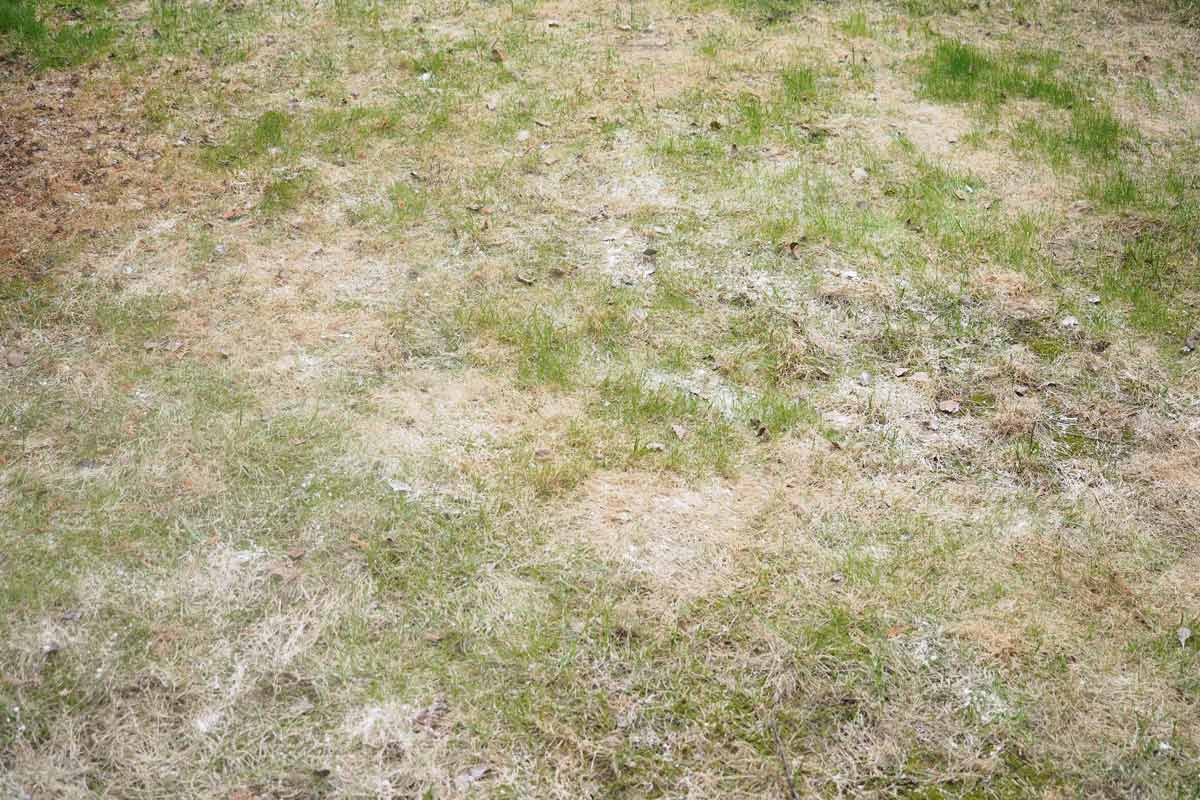 Powdery Mildew is one disease that can be a problem on lawns and certain ornamental plants. This photo demonstrates all stages of the disease, from the white, powdery substance infecting some leaves to the dead, brown blades..
Powdery Mildew is one disease that can be a problem on lawns and certain ornamental plants. This photo demonstrates all stages of the disease, from the white, powdery substance infecting some leaves to the dead, brown blades..
ArveBettum / Getty Images / iStockphoto
Summer is a prime time for spots to start appearing on a variety of plants. These spots can be brown, black, red, yellow, white or multi-colored. They are usually caused by a fungus that affects specific plants. Bacterial and viral infections can also be a cause. The disease may or may not be a serious problem depending on the plant and the actual disease causing the spot. Proper identification is important. Take a sample to your local garden center or extension office if you’re unsure what you’re looking at. After they identify the cause of the spot, they can make recommendations for control if necessary. Some of the diseases only occur during certain conditions or time of year and won’t cause any long-term damage. In those cases, treatment may not be needed.
If a control is warranted now, Lebanon Eagle 0.62G Specialty Fungicide is an excellent choice. There are a number of other steps you can take to minimize lawn disease pressure. Proper fertilization, regular mowing, reduced thatch and increased height of cut will certainly help. Reducing the amount of shade and improving the soil drainage are also key steps. Aerating the lawn will improve drainage. Late summer to early fall is an excellent time to aerate. If your lawn is not looking quite right and you’re curious about potential causes, consider the typical symptoms of these common diseases:
Dollar spot
Dollar spot thrives under continuous high humidity and temperatures between 59 and 86 degrees. It is most severe in dry soils and those low in nitrogen. It appears as sunken, circular patches that measure several inches in diameter. The patches turn brown to straw color and gradually come together to form large irregular patches. The disease first appears and can be recognized by small lesions appearing along the entire leaf blade. They turn from yellow-green to straw color with a reddish-brown border.
Fairy ring
Fairy ring symptoms may include mushrooms and puff balls in rings. There are usually outer rings that are either dark-green or brown in color. The shape and size of the rings will vary. The rings eventually grow together. Fairy ring usually prefers hot weather, but can appear at other times of the year on cool season grasses.
Necrotic ring spot
Necrotic Ring Spot first appears as thinned yellow to light-green circular patches. They start out at 3 to 15 inches in diameter and can extend out to 3 feet. They eventually turn brown or straw-colored and die. The roots and rhizomes of the affected turf turn brown to black. Less susceptible grasses may survive within the diseased patch giving a “frog-eye” appearance. The frog-eye is formed by a spot of healthy grass in the center of a diseased circular patch surrounded by more healthy grass.
Pythium blight
Pythium blight can appear suddenly during hot, humid weather. It first looks like greasy, brown circular spots that range from ¾–2 inches in diameter that rapidly enlarge in size. They look water-soaked and dark-colored in the morning and then form fluffy white masses. These patches eventually can grow together and form large, irregular areas of dead turf that appear brownish-orange in color. Poor drainage and poor air circulation favor this disease.
Rusts
Rusts start out with light yellow flecks on the leaf blades. These flecks enlarge, elongate and turn dark yellow to orange in color. The leaf blades then turn yellow, starting at the tip and progressing to the base. Severe infection causes the shoot to turn yellowish to reddish-brown and slow in growth. As the individual shoots die, the lawn appears to thin out.